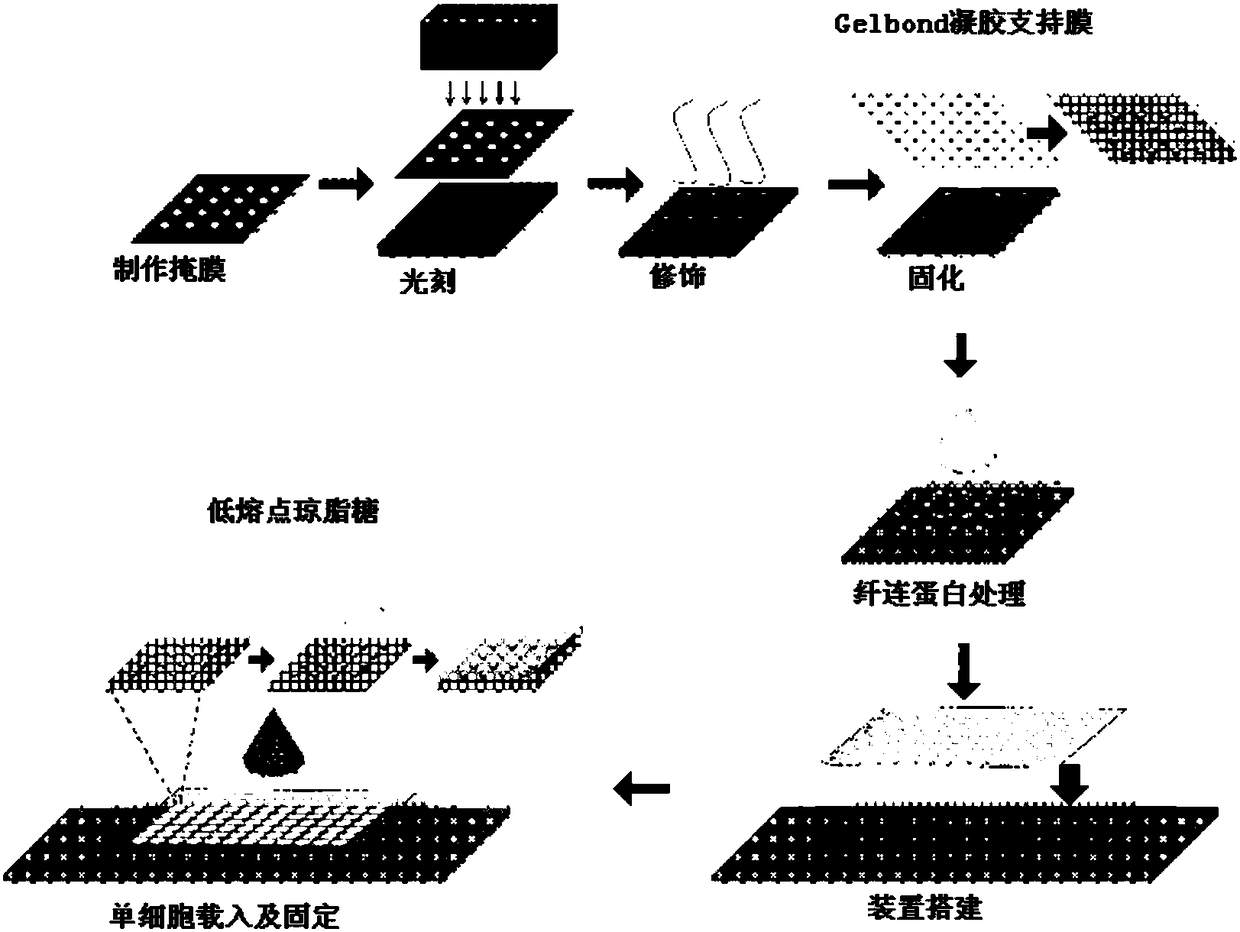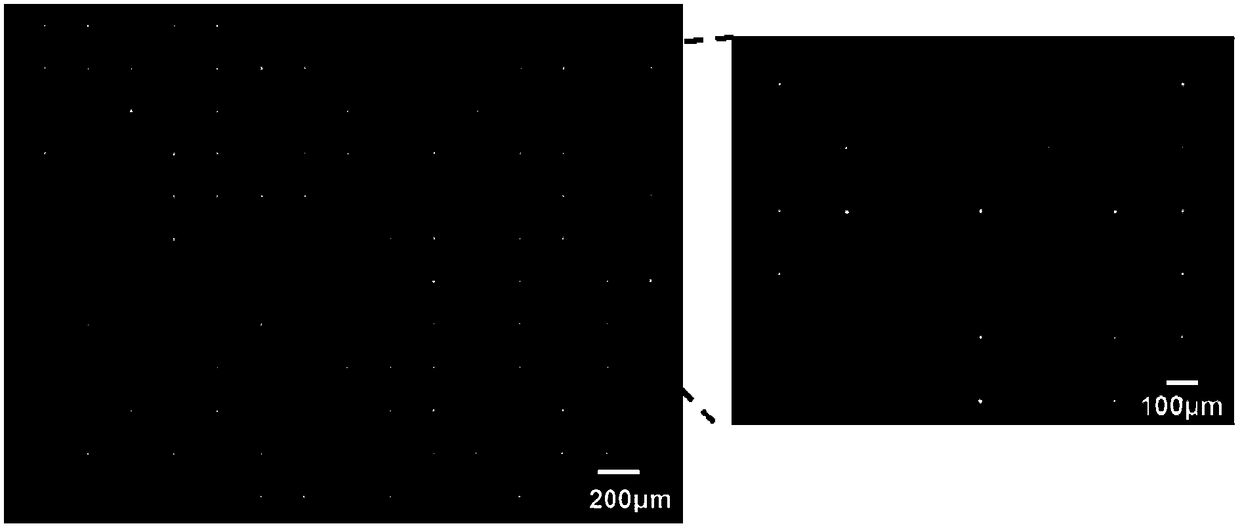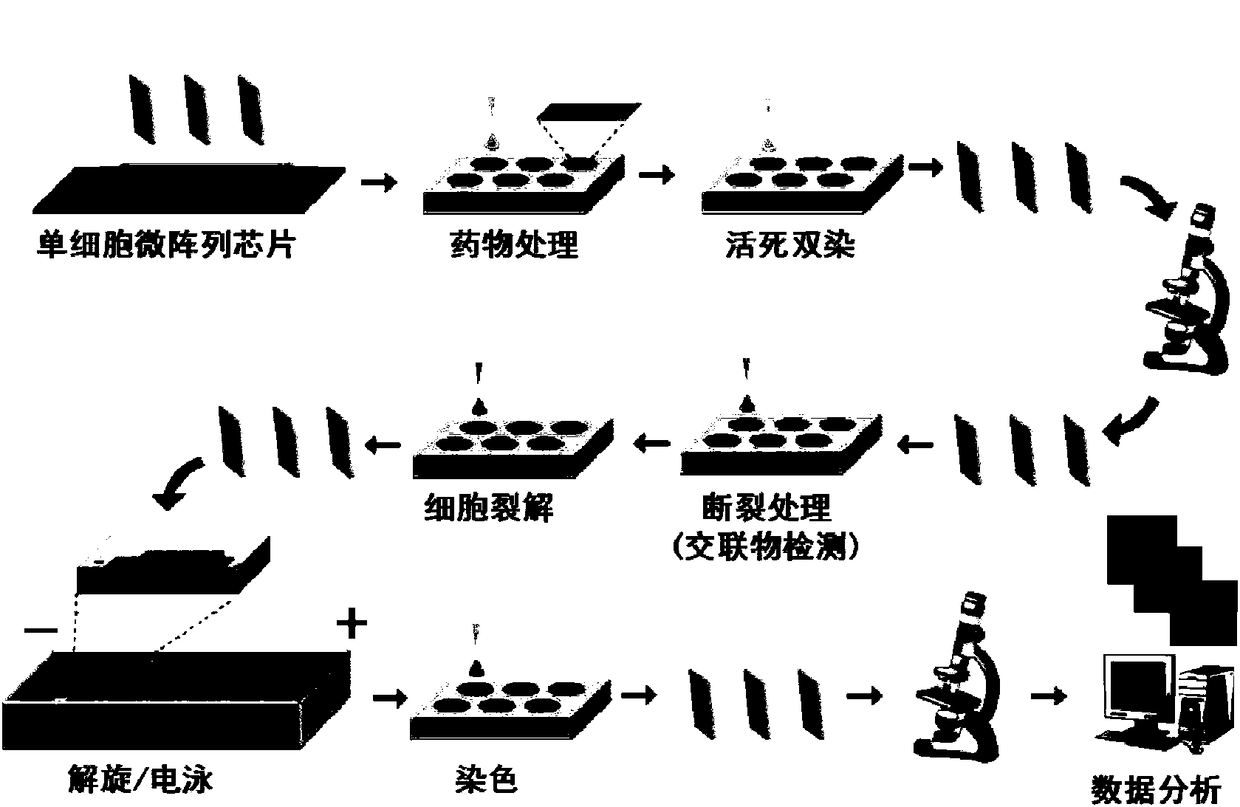A method for detecting cytotoxicity of drug to be tested on target cells and special cell chip thereof
A cell chip and cell technology, applied in the detection of programmed cell death, methods of supporting/immobilizing microorganisms, biochemical equipment and methods, etc., can solve the problem of high cost of large-scale instruments, cumbersome operation, and inability to truly reflect the physiological state of individual cells, etc. question
- Summary
- Abstract
- Description
- Claims
- Application Information
AI Technical Summary
Problems solved by technology
Method used
Image
Examples
Embodiment 1
[0100] Embodiment 1, the making of SF767 cell chip
[0101] The process of making SF767 cell chip is detailed in figure 1 .
[0102] 1. Make a mask: Use AutoCAD2010 drawing software to design and manufacture the graphics of the SF767 cell chip, convert the design graphics into graphics files, and use a high-resolution printer (≥1200dip) to print the graphics files on the chrome plate glass. The chrome plate glass is for the mask.
[0103] 2. Photolithography: After completing step 1, use a mixed solution of concentrated sulfuric acid and hydrogen peroxide (obtained by mixing concentrated sulfuric acid and hydrogen peroxide at a volume ratio of 3:1), acetone and ethanol to clean the silicon wafer, and dry it with an air gun , and then apply SU-8 2050 negative photoresist on the silicon wafer, and then pre-bake (the effect is to fully volatilize the solvent in the SU-8 2050 negative photoresist, and the dried colloid can increase the contact with the silicon wafer. Adhesion a...
Embodiment 2
[0114] Example 2, application of SF767 cell chip to detect cytotoxicity and gene damage of the drug to be tested
[0115] The flow chart of the application of SF767 cell chip to detect the cytotoxicity and gene damage of the drug to be tested is as follows image 3 shown.
[0116] The drug to be tested is nimustine (ACNU), an alkylating agent-type antineoplastic drug, which can cause cross-linking between DNA strands, block DNA replication and transcription, and induce cell apoptosis. The experiment was repeated three times, and the steps for each repetition were as follows:
[0117] 1. Dissolve and dilute nimustine with MEM resistant medium, prepare 300mg / mL nimustine stock solution, filter and sterilize through a 0.22μm filter membrane, and store at -20°C. When in use, dilute the nimustine mother solution with PBS buffer solution of pH 7.4 and 0.01M to obtain a working solution 1 with a nimustine concentration of 0.05mM, a working solution 2 with a nimustine concentration ...
Embodiment 3
[0122] Example 3. Application of SF767 cell chip immunofluorescence in situ detection of the effect of the drug to be tested on the expression of the target protein in the cell
[0123] The flow chart of using SF767 cell chip immunofluorescence to detect the effect of the drug to be tested on the expression of the target protein in the cell is as follows Figure 5shown. The drug to be tested is nimustine, an alkylating agent antitumor drug, which can lead to cross-linking between DNA strands, block DNA replication and transcription, and induce cell apoptosis. The experiment was repeated three times, and the steps for each repetition were as follows:
[0124] 1. Dissolve and dilute nimustine with MEM resistant medium, prepare 300mg / mL nimustine stock solution, filter and sterilize through a 0.22μm filter membrane, and store at -20°C. When in use, dilute the nimustine mother solution with PBS buffer solution of pH 7.4 and 0.01M to obtain a working solution 1 with a nimustine c...
PUM
| Property | Measurement | Unit |
|---|---|---|
| length | aaaaa | aaaaa |
| height | aaaaa | aaaaa |
| diameter | aaaaa | aaaaa |
Abstract
Description
Claims
Application Information
 Login to View More
Login to View More - R&D
- Intellectual Property
- Life Sciences
- Materials
- Tech Scout
- Unparalleled Data Quality
- Higher Quality Content
- 60% Fewer Hallucinations
Browse by: Latest US Patents, China's latest patents, Technical Efficacy Thesaurus, Application Domain, Technology Topic, Popular Technical Reports.
© 2025 PatSnap. All rights reserved.Legal|Privacy policy|Modern Slavery Act Transparency Statement|Sitemap|About US| Contact US: help@patsnap.com



